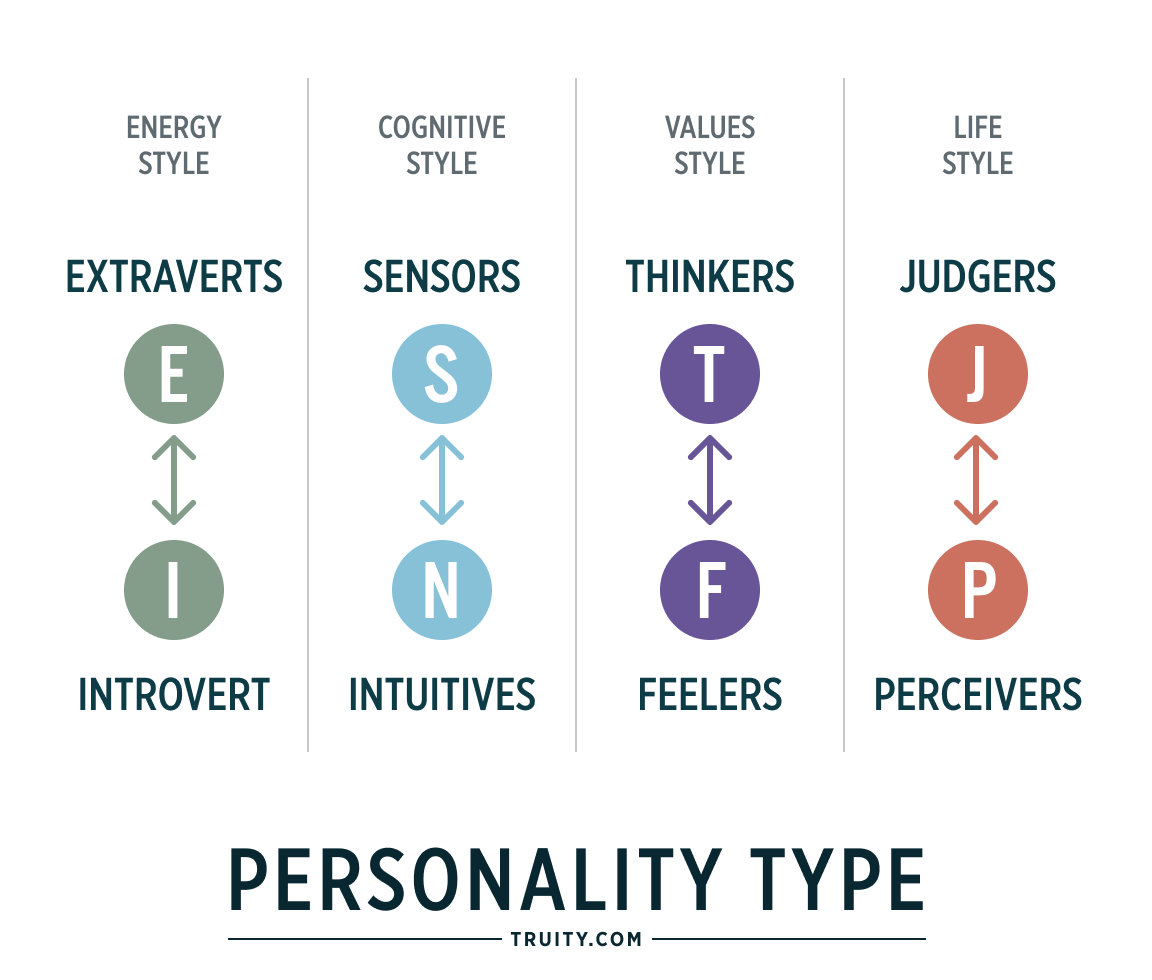Understanding the Myers-Briggs Type Indicator
The Myers-Briggs Type Indicator (MBTI) is a tool designed to help individuals better understand themselves and others. It is based on Carl Jung’s theory of psychological types and explores preferences in four primary dimensions:
The Four Key Areas of Personality
-
Focus of Attention:
- Extraversion (E): Gaining energy from external interactions and activities.
- Introversion (I): Gaining energy from internal thoughts and solitude.
-
Perception of Information:
- Sensing (S): Focusing on tangible facts and details.
- Intuition (N): Trusting patterns, meanings, and future possibilities.
-
Decision-Making Style:
- Thinking (T): Relying on logic and objective analysis.
- Feeling (F): Prioritizing empathy and personal values.
-
Approach to the Outside World:
- Judging (J): Preferring structure, planning, and clear decisions.
- Perceiving (P): Embracing flexibility, spontaneity, and adaptability.
By answering questions and reflecting on your preferences, the MBTI provides a four-letter personality type, such as ENTP, ISFJ, or INTJ. These types reveal insights into your communication style, decision-making tendencies, and relationships.
The MBTI can be a powerful tool for personal growth, helping you to:
- Enhance self-awareness
- Improve teamwork and collaboration
- Identify career paths aligned with your personality
- Understand and appreciate differences in others
Whether you're exploring your personality for fun or seeking deeper insights into your behaviors, the MBTI is a fascinating way to learn more about yourself and those around you.
